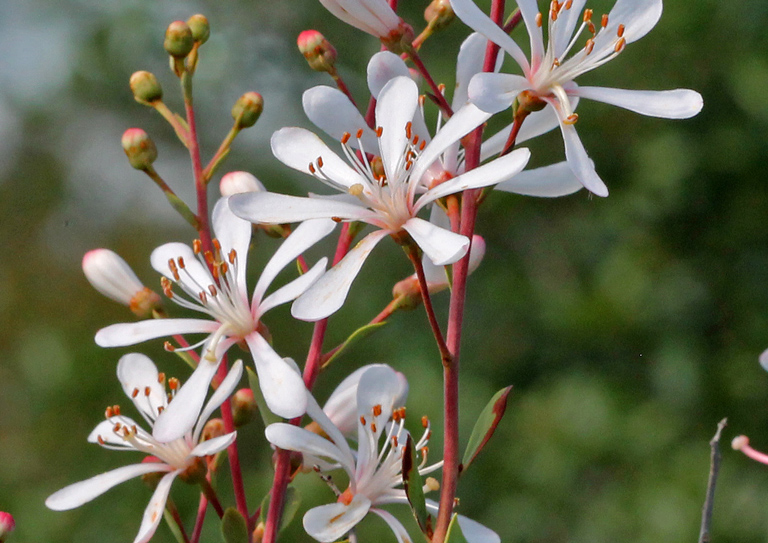Tarflower
Pictured above: Tarflower (Bejaria racemosa) by Mary Keim. Click on terms for botanical definitions. View post as a PDF.
Tarflower (Bejaria racemosa) is a woody evergreen shrub that produces fragrant and showy white to pinkish flowers. Its leaves are arranged alternately and are ovate or elliptical in shape. The undersides of the leaves are often whitish. Its seed is a dark, almost black capsule.
The plant gets its common name from its sticky flowers that attract and then trap bees, flies and other insects.
Tarflower occurs naturally in scrub, pine flatwoods and scrubby flatwoods. It is found in most of peninsular Florida, but its native range does not extend into the panhandle.
Family: Ericaceae (Heath Family)
Native range: Peninsula north to Suwannee, Madison and Jefferson counties
To see where natural populations of tarflower have been vouchered, visit florida.plantatlas.usf.edu.
Hardiness: 8–11
Soil: Dry, sandy soils
Exposure: Full sun to minimal shade
Growth habit: 4-8’ tall, with 2-6’ spread
Propagation: Seed, cutting
Garden tips: Tarflower is great for use in naturalistic landscapes.
Tarflower plants are often available at nurseries that specialize in native plants.Visit PlantRealFlorida.org to find a native nursery on your area.

